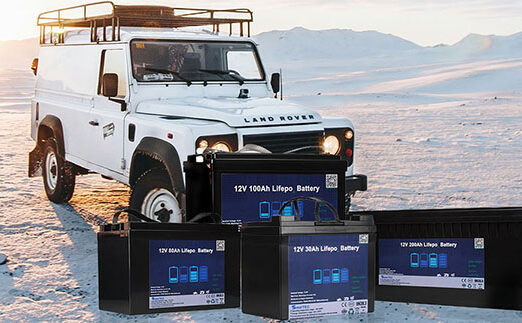Designed to be discharged to DOD higher than 80% or more of their capacity without battery life damage, Deep Cycle Batteries are the marathon runner of the energy storage world. They differ significantly from the standard lead-acid batteries, which can suffer damage if frequently deeply discharged.
Depth of Discharge (DOD)
Deep cycle batteries boast a high DOD, typically above 80%, allowing them to provide long-lasting power for applications that require energy over extended periods. This high DOD is crucial for their reliability and is a testament to their robust design, which enables repeated use and recharging without compromising battery life.
Weight Matters: The Heft of Reliability
A deep cycle battery’s weight indicates its type and capacity. They can range from a modest 20 lbs to a hefty 100 lbs, influenced by factors such as:
–Battery Type: AGM, gel, or lithium
–Capacity: Measured in ampere-hours (Ah)
–Design: Including the materials and internal components
For instance, AGM deep cycle batteries typically weigh between 50-80 pounds, gel batteries come in at around 60-90 pounds, and lithium variants average 30-60 pounds. The higher the capacity, the more substantial the battery, due to additional lead plates and electrolytes.
A Guide to Handling and Installation
Installing and maintaining heavier deep-cycle batteries requires careful consideration. Here are some tips:
– Lifting Techniques: Always use proper lifting methods to avoid injury.
– Securing: Ensure the battery is firmly secured in place to prevent movement and potential damage.
– Weight Distribution: Consider the distribution of weight, especially in mobile applications like RVs and boats.
– Protective Gear: Use gloves and other protective equipment when handling batteries.
-Professional Assistance: Don’t hesitate to seek professional help for installation and maintenance.
On the Horizon: Future Trends
The future of deep-cycle battery technology is bright, with promising advances on the way. Innovations like lithium-ion technology, new materials such as graphene, and solid-state electrolytes are set to revolutionize the market. These advancements aim to produce batteries that are lighter, more efficient, and more cost-effective.
Deep Cycle Battery Types: A Closer Look
Currently, the market offers several types of deep cycle batteries, including lithium titanate, lithium iron phosphate, and lithium ternary. Lithium titanate batteries, known for their longevity, are less common due to their higher cost and larger size. On the other hand, lithium ternary and lithium iron phosphate batteries are widely used due to their balance of life span, cost, and size.
Conclusion
Deep cycle batteries are the go-to choice for sustained power needs. Their ability to handle deep discharges makes them ideal for a variety of applications, from renewable energy systems to recreational vehicles. As technology progresses, we can expect these batteries to become even more efficient and versatile, powering our world in ways we’ve only just begun to explore.

